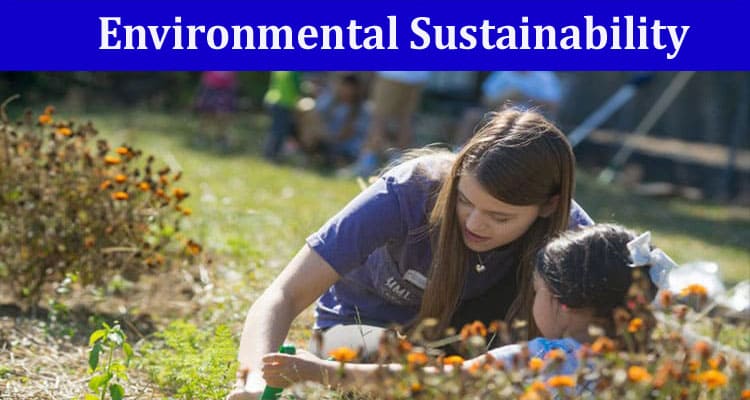With environmental concerns looming large, the need for green stewardship has never been more critical. Individuals, businesses, and communities around the world are increasingly recognising the importance of embracing environmental sustainability to ensure the well-being of our planet.
Below, we will explore some exemplary examples of environmental sustainability in action, highlighting inspiring initiatives and practices that contribute to a more sustainable future.
Sustainable Agriculture Practices
Green stewardship begins at the roots – literally. Sustainable agriculture practices are transforming the way we grow and harvest food. Some good examples of environmental sustainability include food agroecology, organic farming, and permaculture. These approaches prioritise soil health, reduce chemical inputs, and promote biodiversity.
Agroforestry, for instance, integrates trees and shrubs into agricultural landscapes, providing additional benefits like improved soil fertility, carbon sequestration, and enhanced water retention. By adopting sustainable agriculture practices, farmers not only preserve the environment but also contribute to the production of healthier, more nutritious food.
Reforestation and Afforestation Initiatives
One of the most impactful ways to combat deforestation and its associated environmental challenges is through reforestation and afforestation initiatives. Reforestation is the act of replanting trees in areas that have been deforested, and afforestation focuses on establishing new forests in regions that were not previously forested. These also make for great examples of environmental sustainability.
Initiatives like these play a crucial role in carbon sequestration, biodiversity conservation, and soil protection. By restoring and expanding forest cover, green stewardship efforts help mitigate climate change and create sustainable ecosystems that benefit both wildlife and communities.
Circular Economy Practices
Embracing a circular economy is a hallmark of green stewardship, and it involves designing and keeping materials and products in use for as long as possible. Examples include recycling, upcycling, and waste-to-energy initiatives that divert materials from landfills and reduce the environmental impact of production.
In the circular economy model, products are designed with their entire lifecycle in mind, encouraging responsible consumption and minimising the environmental footprint. Companies adopting circular economy practices are visible examples of environmental sustainability as they showcase the power of transforming industries and reducing waste.
Plastic Reduction Campaigns
Plastic pollution is a worldwide environmental crisis, and some examples of environmental sustainability here are evident in campaigns and initiatives focused on reducing plastic usage. Single-use plastic bags, innovative packaging alternatives, and plastic collection and recycling programs are among the strategies employed to address this issue.
Efforts to curb plastic pollution not only protect marine life and ecosystems but also contribute to cleaner air and water. Communities, businesses, and governments working together on plastic reduction initiatives exemplify the impact of collective green stewardship.
Urban Green Spaces and Sustainable Cities
Creating and preserving urban green spaces is a testament to green stewardship in action. Sustainable urban planning involves incorporating parks, green roofs, and tree-lined streets into city designs. These green spaces not only provide recreational areas for residents but also contribute to improved air quality, temperature regulation, and biodiversity in urban environments.
Sustainable cities prioritise public transportation, bike lanes, and pedestrian-friendly infrastructure, reducing reliance on fossil fuel-powered vehicles. By embracing sustainable urban practices, cities become models of environmental stewardship, showcasing a commitment to the well-being of both residents and the planet.
A Collective Effort Toward Sustainability
Green stewardship in action represents a collective effort to address pressing environmental challenges and shape a more sustainable future. These exemplary examples showcase the diverse ways in which individuals, communities, and organisations are making a positive impact on the planet.
As we celebrate these initiatives, it’s essential to recognise that faithful environmental stewardship requires a global commitment. Governments, businesses, and individuals must work together to implement sustainable practices, drive innovation, and create a future where the well-being of the planet is a shared priority.
Ultimately, these examples of green stewardship serve as beacons of hope, demonstrating that positive change is possible when we collectively embrace our role as custodians of the Earth. By fostering a sense of environmental responsibility, we can build a resilient and harmonious world for current and future generations.


